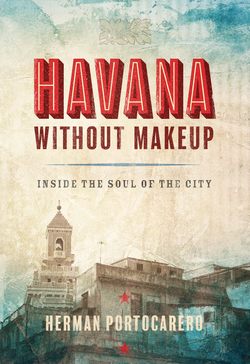Читать книгу Havana without Makeup - Herman Portocarero - Страница 14
На сайте Литреса книга снята с продажи.
Оглавление7.SANTERÍA
The slaves brought to Havana and Matanzas in the nineteenth century came predominantly from territories that are now part of Nigeria, the Congo, and Angola.
Nigeria and Congo are the principal roots of all African traditions in Cuba. The most visible and lively African culture in Havana is that of the Nigerian Yoruba, while the more hidden and secretive rites fall under the general heading of Congo. A Cuban proverb sums it up: “quien no tiene de Congo tiene de Carabalí,” meaning: every Cuban has some African blood, be it from Congo or Calabar (southern Nigeria).
The predominance of the Yoruba may be due to the fact that back home they had an ancient and sophisticated culture, with a rich pantheon of ancestors transformed into worshipped archetypes. Those could easily be identified with Catholic saints when the slaves were baptized en masse upon arrival in Cuba.
The Spanish slavery system, as practiced in Cuba, was far more calculated than the British and the French. The Cuban slave masters realized that the growing numbers of slaves could only be kept in check if they were allowed to preserve some of their own social structures. The British system intended to break those up completely and, by and large, did so elsewhere in the Caribbean, killing the ancestral traditions or driving them so deep underground that they only surfaced during slave revolts. Together with the easier manumissions and the gradual creation of a free black and colored class in Havana, the African cabildos not only maintained but even codified and refined those traditions and soon did so, as we will see, even beyond color lines. This became a very important development for the post-colonial history of the Spanish territories. Whereas in North America the colonial system was basically a fully-fledged apartheid, in the Spanish colonies there was far more mixing of blood and culture. And nowhere more than in Havana. This explains a paradox I’ve often observed: while Jamaica is 90 percent black, it has not preserved even a tiny fraction of the African traditions existing in daily life in Cuba, which is predominantly white.
The worship of African spirits under the guise of Catholic saints (which is the very definition of Santería) was gradually codified during the nineteenth century, first to identify a specific African orisha with a specific Catholic saint. This identification could be based on various criteria, mostly on how a saint looked or dressed or what symbols or tools she or he carried in traditional imagery. Some of the associations are easier to understand than others. The motherly, black Virgen de Regla became the ocean spirit Yemaya. The Caridad del Cobre in her bright yellow and gold outfit became the seductive mulatta Ochún. The mischievous Niño de Atocha, the unpredictable lord of the crossroads, Eleggua. San Lázaro, the patron saint of lepers, turned into the equally suffering Babalú Ayé. And so on.
More mysteriously, Santa Bárbara underwent a sex-change and became the super-macho Chango, probably because the saint, unexpectedly for a female, carries a sword. This was the symbol of her martyrdom, but Santa Bárbara was also associated with the lightning that was supposed to have struck her torturers. As such, she became the patron saint of the Spanish artillerymen and of anyone working with explosives. Chango was also the spirit of thunder and lightning. In this way, in Havana a virgin saint became a virile African.
By identifying an orisha with a saint, the corresponding Catholic holiday could be observed by the Africans in their own ways. The Día de Reyes carnival was the yearly culmination of that system.
Apart from these identifications, oral legends regarding the deeds of the orishas were recorded in so-called patakis, the equivalent of the Catholics’ equally fanciful saints’ lives. The difference, though, is that the orishas’ adventures are anything but exemplary or edifying: they’re much closer to the endless quarrels, conflicts, and affairs of the Olympian gods of Greek mythology.
The orishas are often wrongly described as “African gods,” but Santería is strictly monotheistic. The orishas are mostly accessible intermediaries to plug into the vital force permeating the cosmos, a force known as aché, to bring the worshipper personal energy and luck called iré. This is best obtained through the trances brought about by the African drums, when for a short time the worshipper identifies with the orisha ruling his or her destiny.
